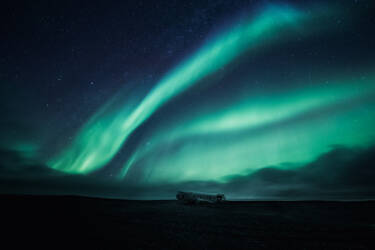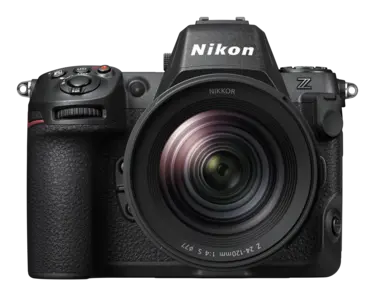5 tips for better northern lights photographs

Get ready for this year’s solar maximum with these tips and techniques by award-winning landscape and astrophotographer Mikko Lagerstedt
The northern lights are one of the world’s most awe-inspiring natural phenomena. They are unpredictable, fleeting and magical to experience. Capturing their beauty is not just about camera settings. It takes preparation, patience, and artistic intent. This guide is aimed at those who want to push their aurora photography further. From planning and location scouting to advanced camera settings and post-production, here are five ways to create meaningful and visually stunning images of the aurora borealis.

Z7 + AF-S NIKKOR 14–24mm f/2.8G ED + Mount Adapter, 14mm, 15 sec, f/2.8, ISO 3200, ©Mikko Lagerstedt
1. Preparation is everything
Photographing the aurora begins long before you press the shutter. The first step is understanding solar activity. Check the KP index, which indicates the level of geomagnetic activity. Even a KP of 2 can be enough in northern latitudes such as Finland or Norway. Apps such as Aurora Forecast and My Aurora Forecast Pro offer tailored notifications based on your GPS location.
This year is an especially good time to chase the lights. We are currently at the peak of the solar cycle, known as the solar maximum, which means the sun is more active and the chances of strong auroral displays are significantly higher than usual. If you have ever wanted to photograph the northern lights, 2025 is one of the best opportunities in years.
Next, monitor the weather closely. Cloud cover can quickly ruin a great opportunity. Use local services such as Yr.no or Windy to check conditions. I also recommend looking at satellite images before heading out. If conditions are even slightly promising, it is usually worth going. Some of my most unusual images were taken during weak forecasts, when faint auroras revealed themselves only on the camera sensor.
Also prepare your gear well in advance. Make sure your batteries are fully charged, memory cards are empty, and your tripod is working properly. Bring warm clothes, hand warmers and headlamps with a red-light mode to preserve your night vision.
Z7II + NIKKOR Z 14-24mm f/2.8 S. Left: 14mm, 15 sec, f/2.8, ISO 3200. Middle: 14mm, 15 sec, f/2.8, ISO 1000. Right: 14mm, 15 sec, f/2.8, ISO 2000. ©Mikko Lagerstedt
2. Scout your location during the day
Knowing your surroundings in advance helps you create better compositions and avoid hazards at night. I usually scout during daylight hours. I look for open views toward the north and interesting foreground elements such as trees, lakes, mountains or cabins. A strong foreground can elevate a good image into a great one.
Use apps such as PhotoPills to check the position of the moon and stars. Moonlight can help illuminate the landscape and add atmosphere, especially when auroras are dim. Plan your composition so that the lights have room to dance across the sky. Avoid complex or distracting foregrounds unless they serve a purpose in your image.
Think about layering your composition. Foreground, midground and background add depth and structure. Often, less is more. Simplicity gives more space for the aurora to shine.
Left: D810 + AF-S NIKKOR 14-24mm f/2.8G ED, 14mm, 30 sec, f/2.8, ISO 6400. Middle: Z7 + AF-S NIKKOR 14–24mm f/2.8G ED + Mount Adapter, 14mm, 15 sec, f/2.8, ISO 3200. Right: Z8 + NIKKOR Z 14-24mm f/2.8 S, 14mm, 20 sec, f/2.8, ISO 3200. ©Mikko Lagerstedt
3. Use Manual settings for full control
Your camera cannot predict what the aurora will do, so manual settings are essential. These are the settings I start with:
- Aperture: f/1.2 to f/2.8
- Shutter speed: 2 to 20 seconds
- ISO: 1600 to 6400
- Focus: Manual focus using Live View, zoomed into a bright star
- White Balance: Set manually to around 3500K
These values are a starting point. If the aurora is moving fast, use shorter exposures to keep definition. If the display is slow and dim, increase your shutter time slightly. Avoid going too long with your exposures or the aurora may become a blur.
I sometimes underexpose slightly to preserve highlight details, especially during bright displays. Noise can be reduced in post, but overexposed auroras are hard to recover. Always shoot in RAW to retain full editing flexibility.
Quick tip: If you have a second camera body, consider setting it up to shoot a time-lapse while you focus on stills. I often place my second camera, the Nikon Z7II with a wide lens like the NIKKOR Z 20mm f/1.8 S on a tripod, set the interval timer and let it record the movement of the aurora over time. Settings differ, but for bright aurora I use ISO 1600, f/1.8, 6.0 sec. This is a great way to get dynamic footage while staying fully immersed in your primary composition.


4. Edit to bring out the feeling
Post-processing is where the final image comes alive. My workflow begins in Lightroom. I adjust contrast, White Balance, and highlight recovery first. I often use the Tone Curve for subtle contrast and the HSL panel to fine-tune colours.
Clarity and Dehaze tools are powerful but must be used with restraint. Too much can make the aurora look unnatural. I apply selective noise reduction only in the shadows and sometimes sharpen the aurora slightly to bring out detail.
Sometimes I take several exposures at different brightness levels and blend them in Photoshop. This allows me to control both the aurora and the foreground exposure. I only use this method when necessary and always aim to keep the result as natural as possible.
Colour grading is the final touch. I might adjust the hue and tones to reflect what I saw and felt on location. Every scene is different. Trust your memory more than the histogram.


5. Use reliable gear for the conditions
Good equipment makes the experience smoother, but it does not need to be the latest or most expensive. What matters most is reliability and low-light performance. This is my current setup:
- Nikon Z6III – great dynamic range and low noise
- NIKKOR Z 14-24mm f/2.8 S – wide, fast, and sharp
- NIKKOR Z 20mm f/1.8 S – excellent for astro work
- Sturdy tripod – essential in windy or snowy conditions
- Extra batteries – cold weather drains them quickly
- Lens heater or hand warmers – prevent fogging and frost
- Red-light headlamp – avoid ruining your night vision
Optional extras include a power bank, remote shutter release and a backup memory card. I also bring snacks and warm layers. Being comfortable lets you focus fully on the experience and creative process.
Finally, enjoy the process when you are out there. Sometimes the sky can explode with spectacles you don’t know how to describe and sometimes it’s a waiting game and not much appears. It’s all part of the photography process.
More in Travel and Landscapes
Featured products
Featuring Mikko Lagerstedt

Unlock greater creativity















